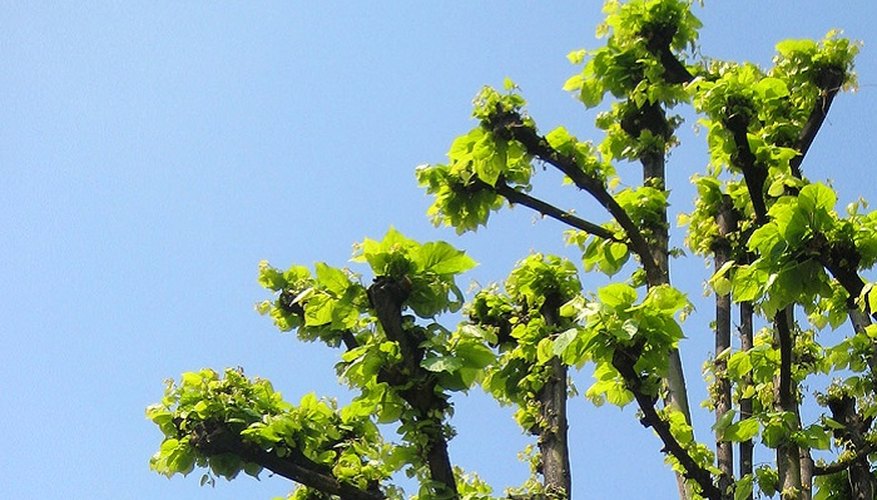Gardeners pollard their sycamore trees to keep the tree at a desired height and create a ball-shaped canopy. Pollarding, a specialised method of pruning, involves removing all of the previous season's growth. Because the tree is cut back to the same area every year, the crown remains the same size. This is a process best started while the tree is young and performed every winter. Before pollarding a sycamore tree, keep in mind that once you perform this type of pruning, it must be done every year to maintain the tree's integrity.
- Gardeners pollard their sycamore trees to keep the tree at a desired height and create a ball-shaped canopy.
- Before pollarding a sycamore tree, keep in mind that once you perform this type of pruning, it must be done every year to maintain the tree's integrity.
Cut into the tree, making sure all cuts to the trunk are outside the branch collar. This is the swollen area where the branch meets the trunk. Do not cut into the collar, but make the cuts flush to it.
Remove most of the branches. Create the sycamore's structure the first year by choosing three to five of the strongest branches and removing the others. These are the tree's scaffolding branches and should be evenly spaced around the tree. Cut the central leader -- the trunk -- to 30 cm taller than the scaffolding branches.
Remove all growth from the below the scaffolding branches.
- Remove most of the branches.
- Remove all growth from the below the scaffolding branches.
Cut all of the sycamore's growth from the previous season from the scaffolding branches in the second year. Cut the branches themselves, and the central leader, back to the previous year's length.
Pollard the sycamore in subsequent years by cutting out all of the previous season's growth and cutting the scaffold branches back to their original length.
